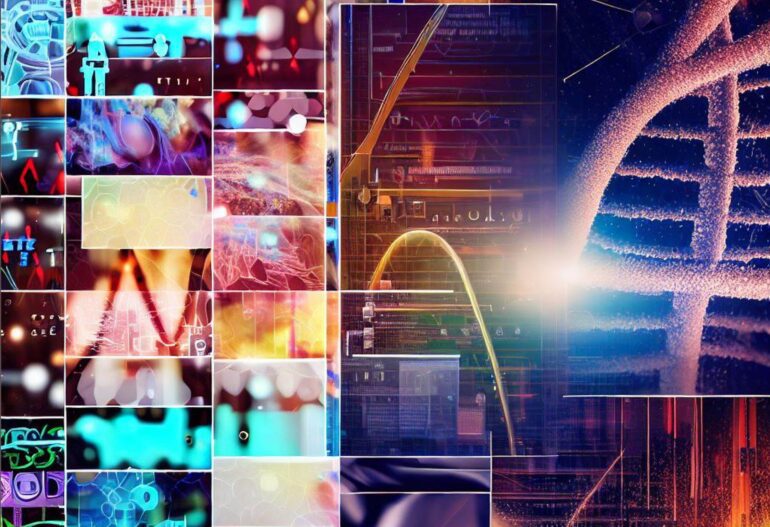TL;DR:
- MIT researchers have developed BioAutoMATED, an automated machine learning system for biology research.
- It simplifies the process of building machine learning models and handles data preprocessing.
- BioAutoMATED expands the capabilities of AutoML to biological sequences like DNA and proteins.
- It offers various supervised ML models, providing flexibility and accuracy in model selection.
- The system reduces time and effort, allowing researchers to focus on core objectives.
- It benefits research groups with smaller datasets, extracting meaningful insights from available data.
- The code for BioAutoMATED is publicly available, encouraging collaboration and improvement.
- The system empowers scientists and engineers to leverage machine learning for biology research.
Main AI News:
In a groundbreaking study, the brilliant minds at the Massachusetts Institute of Technology (MIT) have unveiled their latest creation: BioAutoMATED. This automated machine learning system is set to transform the landscape of biology research, offering a game-changing solution to scientists and engineers in the field. Spearheaded by the esteemed Jim Collins, the Termeer Professor of Medical Engineering and Science, this innovative system aims to revolutionize the process of building machine learning models, simplifying it like never before.
Traditionally, recruiting machine learning experts for biology research has been a daunting and arduous task, both in terms of time and financial resources. Even with an expert on board, the intricate process of selecting the right model, formatting datasets, and fine-tuning the model can significantly impact its overall performance. In fact, according to a Google course on the Foundations of Machine Learning, data preparation and transformation alone can consume up to 80% of the project’s time. It’s no wonder that researchers in the biological sciences have been hesitant to fully embrace machine learning techniques.
BioAutoMATED has been specifically designed to address these challenges, providing an automated machine learning system tailored exclusively for biology research. While automated machine learning (AutoML) systems are still relatively new, with most applications focused on image and text recognition, BioAutoMATED takes AutoML to new heights by incorporating biological sequences into its repertoire. These sequences, such as DNA, RNA, proteins, and glycans, form the fundamental language of biology. By bridging the gap between machine learning and biology, BioAutoMATED opens up a world of possibilities for researchers.
One of the key advantages of BioAutoMATED lies in its ability to explore and construct a wide array of supervised ML models. From binary classification models to multi-class classification models and regression models, this cutting-edge system encompasses them all. By amalgamating multiple tools under one umbrella, BioAutoMATED provides a vast search space, enabling researchers to achieve unparalleled flexibility and accuracy in selecting the most appropriate model.
The traditional path of conducting experiments at the intersection of biology and machine learning has always been an expensive endeavor. Research groups often find themselves needing to invest heavily in digital infrastructure and trained human resources before they can even determine the viability of their ideas. However, BioAutoMATED seeks to shatter these barriers by empowering researchers with the freedom to run initial experiments and assess the feasibility of further exploration. This way, they can gauge whether it is worthwhile to bring in a machine learning expert to develop a specialized model for their research.
The benefits of embracing BioAutoMATED are truly manifold. Foremost, it significantly reduces the time and effort required to build AI models for biology research. What would typically demand weeks of laborious work can now be accomplished in a matter of hours. This newfound efficiency allows researchers to channel their energy into their core research objectives, unburdened by the intricacies of machine learning.
Moreover, BioAutoMATED caters especially to research groups dealing with smaller, sparser biological datasets. It expertly navigates these datasets, exploring models that are ideally suited for their unique characteristics while also handling more complex neural networks. This versatility ensures that researchers can extract the maximum value from their available data, uncovering meaningful insights that were previously hidden.
To foster widespread adoption and foster collaboration, the ingenious researchers behind BioAutoMATED have generously made the code publicly available on GitHub. They actively encourage others to build upon their work, engaging in fruitful collaborations with larger communities to transform BioAutoMATED into a truly universal tool. By promoting awareness and merging the realms of biological and AI-ML practices, BioAutoMATED seeks to propel the field of biology research forward, unlocking new realms of collaboration and discovery.
Conclusion:
The development of BioAutoMATED presents significant opportunities in the market. By providing an automated machine learning system specifically designed for biology research, it addresses the time-consuming and costly challenges associated with recruiting machine learning experts. This breakthrough technology streamlines the research process, allowing scientists and engineers to leverage the power of machine learning without being hindered by data preprocessing and model selection complexities. With its ability to handle biological sequences and offer various ML models, BioAutoMATED opens up new possibilities for collaboration and discovery in the biological sciences. The availability of its code on GitHub encourages further enhancements and engagement from the larger community, paving the way for advancements in the market and transforming the landscape of biology research.

